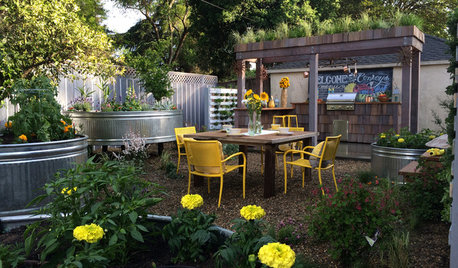Coconut Milk to clone plants?
rain2fall
14 years ago
Related Stories

MOST POPULARHouzz Call: Show Us Your Winter View!
Share pictures of your home and garden in winter — whatever your climate, architecture and plantings
Full Story
HOUSEPLANTSHow to Grow Orchids Indoors
Orchids are the exotic aristocrats of the flower world and can make themselves comfortable in almost any home
Full Story
FARM YOUR YARDRemake Your Backyard Into a Mini Farm
You can get a taste of country life by line-drying your laundry, growing some produce or going whole hog with the critters
Full Story
MOST POPULAR7 Ways to Design Your Kitchen to Help You Lose Weight
In his new book, Slim by Design, eating-behavior expert Brian Wansink shows us how to get our kitchens working better
Full Story
KITCHEN DESIGNHouzz Call: What’s Cooking in Your Kitchen?
Most of us turn to recipes, videos and culinary shows when we cook. Where do you set your cookbook, tablet or TV screen?
Full Story
PETSHouzz Call: Send in the Design Cats
Post your best photo of your cat at home, in the garden or with you in your studio. It could be published in a featured ideabook
Full Story
FARM YOUR YARDHouzz Call: Show Us Your One-of-a-Kind Chicken Coops
Do you have a fun or stylish backyard shelter for your feathered friends? Post your pictures and stories in the Comments!
Full Story
SHOP HOUZZHouzz Products: Great Gifts for Mom
Mother’s Day is May 11! Let Mom know how much she means to you with one of these terrific gifts from the Houzz Products section
Full StorySponsored
Zanesville's Most Skilled & Knowledgeable Home Improvement Specialists
More Discussions






albert_135 39.17°N 119.76°W 4695ft.
rain2fallOriginal Author
Related Professionals
Roxbury Crossing Landscape Architects & Landscape Designers · Clermont Landscape Contractors · Stamford Landscape Contractors · Anderson Landscape Contractors · Flagstaff Landscape Contractors · Fort Atkinson Landscape Contractors · Gaithersburg Landscape Contractors · Holtsville Landscape Contractors · Las Vegas Landscape Contractors · Live Oak Landscape Contractors · Matteson Landscape Contractors · Pahrump Landscape Contractors · South Lake Tahoe Landscape Contractors · The Villages Landscape Contractors · York Landscape Contractorsalbert_135 39.17°N 119.76°W 4695ft.
rain2fallOriginal Author
albert_135 39.17°N 119.76°W 4695ft.
rain2fallOriginal Author
origami_master
Mdon240
Frank Davidson